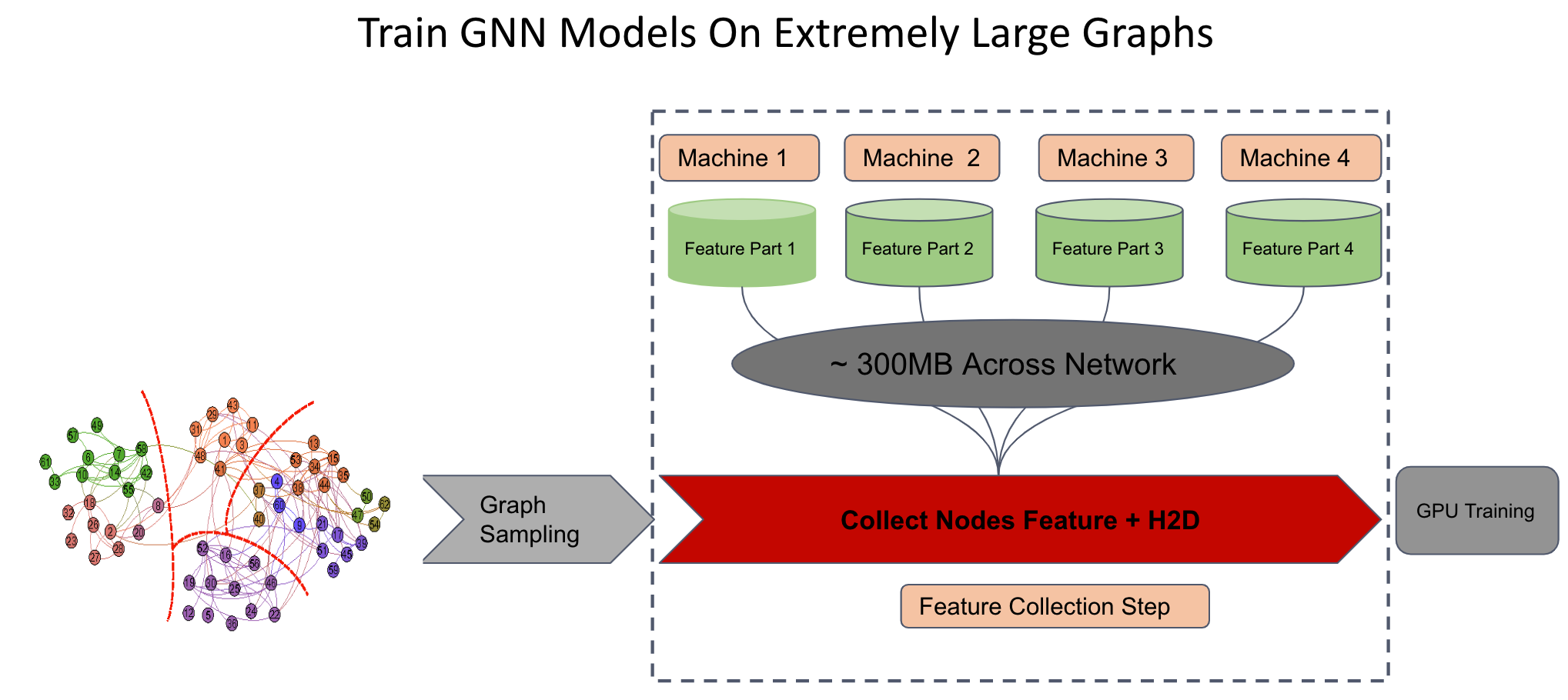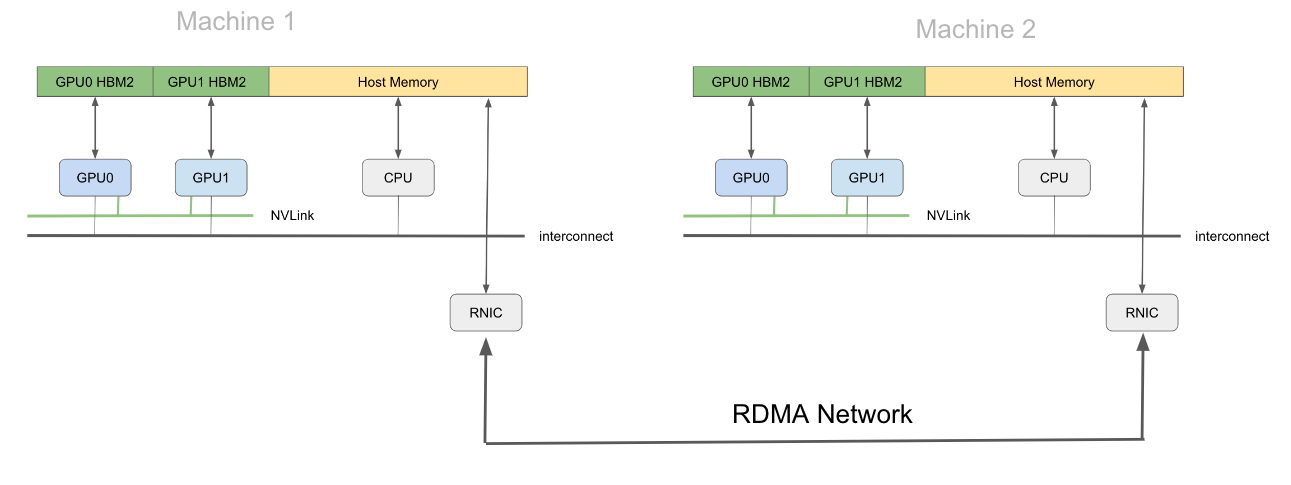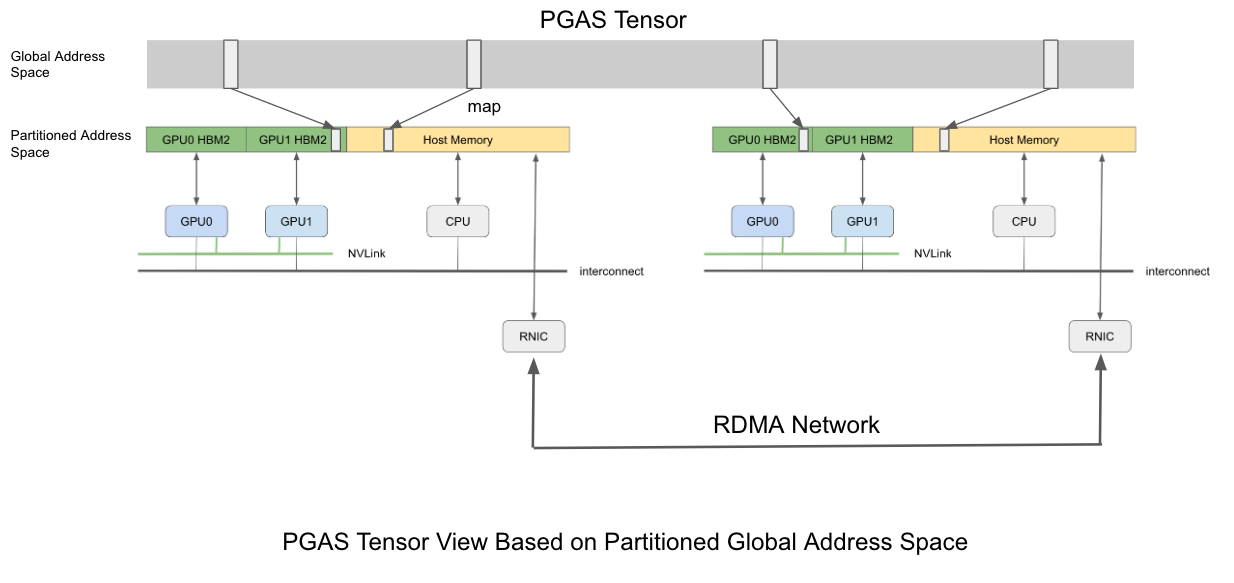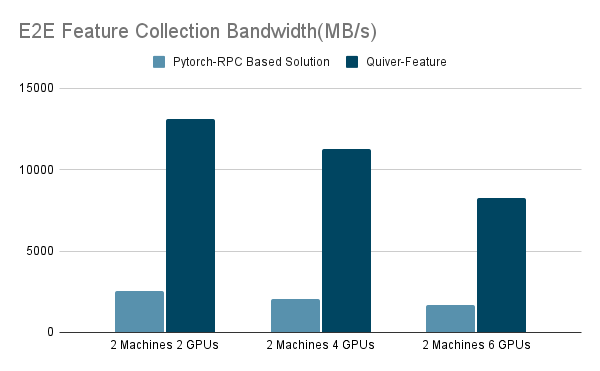Quiver-Feature is a RDMA-based high performance distributed feature collection component for training GNN models on extremely large graphs, It is built on Quiver and has several novel features:
-
High Performance: Quiver-Feature has 5-10x throughput performance over feature collection solutions in existing GNN systems such as DGL and PyG.
-
Maximum Hardware Resource Utilization Efficiency: Quiver-Feature has minimal CPU usage and minimal memory bus traffic, leaving much of the CPU and memory resource to tasks like graph sampling and model training.
-
Easy to use: To use Quiver-Feature, developers only need to add a few lines of code in existing PyG/DGL programs. Quiver-Feature is thus easy to be adopted by PyG/DGL users and deployed in production clusters.
GPU-centric data placement and Zero-Copy data access method are two keys behind Quiver-Feature's high performance.
GPU-Centric Data Placement: Quiver-Feature has a unified view of memories across heterogeneous devices and machines. It classifies these memories into 4 memory spaces under a GPU-centric view: Local HBM(Current GPU's Memory),Neighbor HBM, Local DRAM(Current machines's CPU memory) and Remote DRAM(Remote CPU's memory). These 4 memory spaces have connections with each other using PCIe, NVLink and RDMA etc.
Accessing different memory spaces from GPU has unbalanced performance. Considering that feature data access frequency during GNN training is also unbalanced, Quiver-Feature uses an application-aware and GPU-Centric data palcement algorithm to takes full advantage of the GPU-centric multi-level memory layers.
Zero-Copy Data Access: Feature collection in GNN training involves massive data movement across network, DRAM, PCIe and NVLink and any extra memory copy hurts the e2e performance. Quiver-Feature uses one-sided commnunication methods such as UVA for local memory spaces access(Local HBM, Local DRAM, Neighbor HBM) and RDMA READ for remote memory space access(Remote DRAM), achiving zero-copy and minimum CPU intervention.(You can refer to this document for more RDMA details)
DistTensorPGAS: Above those memory spaces, Quiver-Feature adopts PGAS memory model and implements a 2-dimension distributed tensor abstraction which is called DistTensorPGAS. Users can use DistTensorPGAS just like a local torch.Tensor, such as querying shape and performing slicing operation etc.
As far as we know, there's no public GNN system directly supports using RDMA for feature collection. DGL uses TensorPipe as its rpc backend, TensorPipe itself supports RDMA but DGL has not integrated this feature. Since TensorPipe is also the official rpc backend of Pytorch, we compare the feature collection performance betweenQuiver-Feature with Pytorch-RPC Based Solution.
We have 2 machines and 100Gbps IB networks between them. We partition the data uniformly and start M GPU training processes on each machine(which we will refer as 2 Machines 2M GPUs in the following result chart). we benchmark feature collection performance of Quiver-Feature and Pytorch-RPC Based Solution and we can see that Quiver-Feature is 5x better over Pytorch-RPC Based Solution in all settings.
-
Install Quiver.
-
Install Quiver-Feature from source
$ git clone git@github.com:quiver-team/quiver-feature $ cd quiver-feature/ $ pip install .
-
Install Quiver.
-
Install the
Quiver-Featurepip package.$ pip install quiver-feature
We have tested Quiver with the following setup:
-
OS: Ubuntu 18.04, Ubuntu 20.04
-
CUDA: 10.2, 11.1
-
GPU: Nvidia P100, V100, Titan X, A6000
You can download Quiver-Feature's examples to test installation:
$ git clone git@github.com:quiver-team/quiver-feature.git
$ cd quiver-feature/examples/reddit
$ python3 distribute_training.py
A successful run should contain the following line:
Starting Server With: xxxx
To use Quiver-Feature, you need to replace PyG's feature tensors with quiver_feature.DistTensorPGAS,this usually requires only a few changes in existing PyG programs with following 4 steps on each machine:
-
Load feature partition and meta data which belongs to the current machine.
-
Exchange feature partition meta data with other processes using
quiver_feature.DistHelper. -
Create a
quiver_feature.DistTensorPGASfrom local feature partition and meta data. -
Pass the
quiver_feature.DistTensorPGASbuilt above as parameter to each training process for feature collection.
Here is a simple example for using Quiver-Feature in a PyG's program. You can check the original scripts for more details.
def train_process(rank, dist_tensor):
...
for batch_size, n_id, adjs in train_loader:
...
# Using DistTensorPGAS Just Like A torch.Tensor
collected_feature = dist_tensor[n_id]
...
if __name__ == "__main__":
# Step 1: Load Local data partition
local_tensor, cached_range, local_range = load_partitioned_data(...)
# Step 2: Exchange TensorPoints Information
dist_helper = DistHelper(...)
tensor_endpoints = dist_helper.exchange_tensor_endpoints_info()
# Step 3: Build DistTensorPGAS from local feature partition
dist_tensor = DistTensorPGAS(...)
# Step 4: Spawn Training Processes Using DistTensor as Parameter
mp.spawn(
train_process,
args=(..., dist_tensor, ...),
nprocs=args.device_per_node,
join=True
)
...Quiver-Feature is licensed under the Apache License, Version 2.0
If you use Quiver-Feature in your publication,please cite it by using the following BibTeX entry.
@Misc{Quiver-Feature,
institution = {Quiver Team},
title = {Quiver-Feature:A High Performance Feature Collection Component For Training GNN On Extremely Large Graphs},
howpublished = {\url{https://github.com/quiver-team/quiver-feature}},
year = {2022}
}




